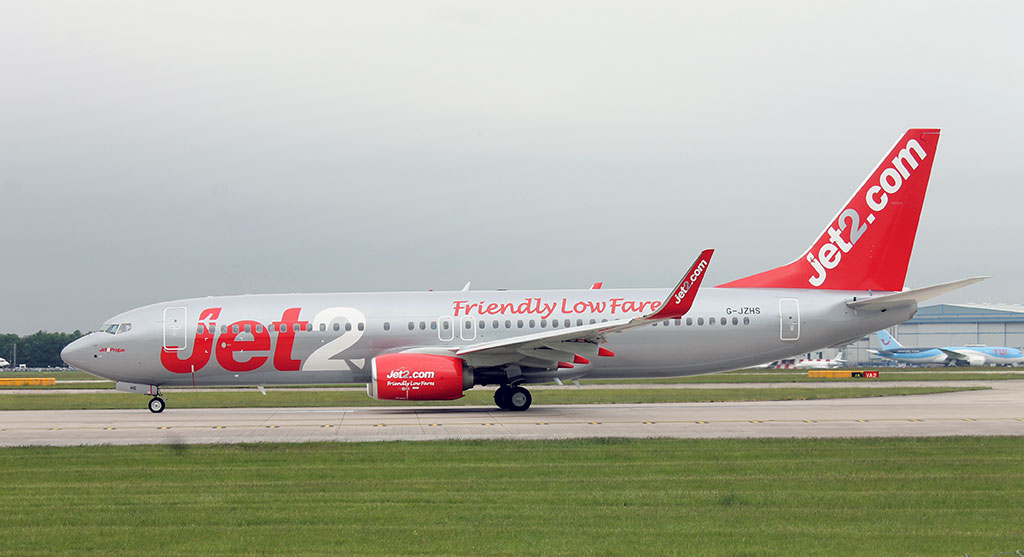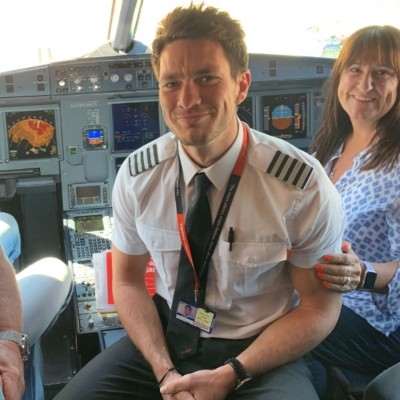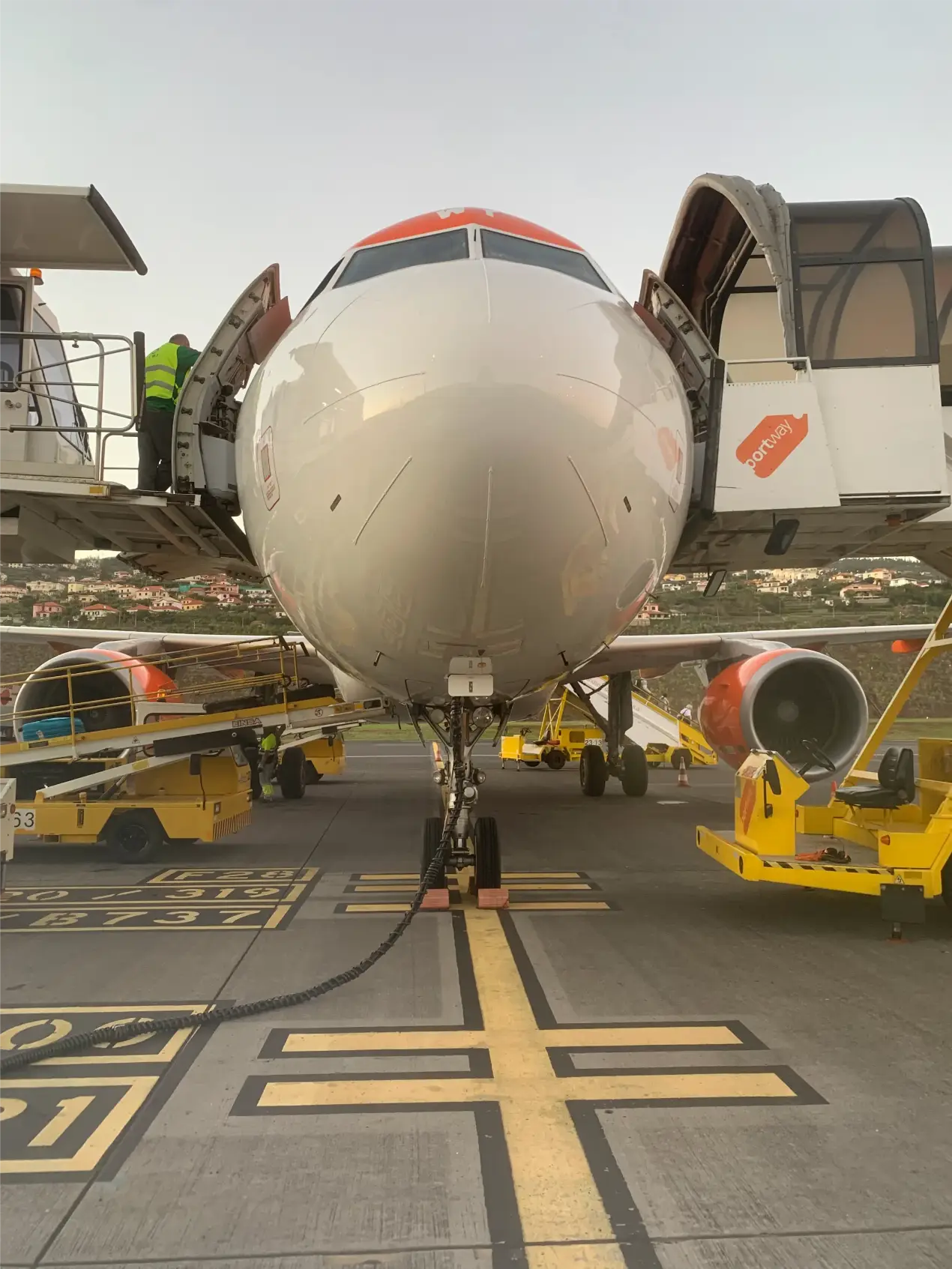Jet 2 has finally joined the party when it comes to offering a fully-funded pilot training programme. Titled ‘Jet2FlightPath’, the multimillion-pound investment scheme launched this month, and applications are open until 3rd June 2025 for the 60 places available on this year’s intake.
Instead of just regurgitating the marketing information on their website as other aviation websites have done, in this article, I’m going to cut through Jet2’s marketing and dissect what this programme really means for aspiring pilots, and what life would look like after training. We’ll look at the pros, the cons, and everything in between of the Jet2FlightPath programme. As a current short-haul airline captain based in the UK, and having come through a sponsored scheme myself, I’ll also be giving my personal opinion on it.
On the front of it, this news of the Jet2FlightPath programme has been a nice surprise, and music to the ears of many aspiring pilots. But steady on, before you throw your hat in the ring (if only it were that easy), you need to understand exactly what this course consists of, along with where it’ll leave you within the airline industry if you were to embark on it.
Although the course is ‘fully funded’, undertaking a scheme like this can be a very large commitment (even the application process itself takes commitment!) and despite not having to put any money upfront, you could find yourself financially tied to something which may not be right for you, so it’s important you know the in’s and out’ of how the Jet2FlightPath programme works.
To ensure this article is as accurate and valuable as possible, I’ve combed through the T&Cs and FAQs of the programme, along with speaking to current Jet2 pilots. I’ve condensed all of that, along with my findings, into this relatively comprehensive article. The picture that’s emerging isn’t necessarily bad, but there are considerations you must bear in mind if you’re looking to apply.
For those who have applied, check out our other post Jet2FlightPath – How To Pass Pilot Selection, for a comprehensive rundown of the selection process and how to ensure you give yourself the best chance of success.
Overview: Jet2FlightPath at a glance.
Before we dissect what this scheme really means for your career prospects, let’s nail down the basics. The Jet2FlightPath programme is, on paper, a fully sponsored ATPL pathway that can take you from zero hours to the right-hand seat of a jet.
All of the detailed information you need can be found on their website here, but to save you time scouring through it, I’ve broken down a high-level overview of the scheme requirements here:
Requirements To Apply
- Age: 17+ to apply. 18 by 5th August 2025
- Education: Minimum 5 GCSEs grades 4-9 (A-C) including Maths and a Science subject (Equivalent qualifications accepted (e.g., Scottish National 5s, International Baccalaureate, and other recognised international qualifications).
- Right to live and work in the UK without restrictions
- Hold or be eligible for a CAA Class 1 medical (or at least the realistic prospect of obtaining one)
- Native English speaker, or equivalent proficiency
- Height between 1.57 m (5’2”) and 1.91 m (6’3”). (You may still apply if over 1.91m but will have to undergo a functionality check)
- Current passport with at least 12 months’ validity remaining, and the ability to travel to and gain entry into all countries to which we fly on an unrestricted basis.
Application Process
The stages of the application process are as follows:
- Take their online quiz
- Submit a full application
- Complete online psychometric tests
- Online interview
- In-person assessment day
One interesting point to note is that no CV or cover letter is required. They obviously feel they can get a good enough understanding of whether the candidate is the right fit for the course through the above methods without the need for the more traditional paperwork.
So, if you’re looking to apply, what’s going to give you the best chance of success at each stage of the selection process? I’ll be doing a breakdown either in a blog post or video of how to navigate Jet2’s selection process (please email me at team@pilotbible.com if you’d find a video helpful), but for now grab a copy of the book ‘How To Become An Airline Pilot’ which walks you through the entirety of the airline selection process and exactly what the assessors will be looking for at each stage.
Training Course Overview
The planned course footprint is 18months long, but delays during training in the UK are an issue across all flight schools right now. The course will culminate in you attaining a Frozen ATPL, which is actual
Jet2 are sensibly using three training providers for the course, which are:
SkyBorne
Leading Edge
FTEJerez
Using three providers is smart, it means if there are issues with one of the providers, their inflow of cadets won’t grind to a halt. All three providers break the course down into the following sections:
- Ground School
- Single-Engine Training
- Multi-Engine & Instrument Training
- Advanced Upset & Recovery Prevention Training
- Multi Crew Cooperation Course
- Type Rating
Jet2FlightPath Pros
There’s a lot about this scheme that’s great. Specifically:
Fully Funded
You aren’t required to pay a penny upfront for the training. Although there are ways Jet2 will likely recoup the money they’ve invested in you (which we’ll get on to in the next section), you don’t have to go finding a £100,000+ flight training loan and securing it against a family home. That takes a hell of a lot of stress off things!
As well as not having to pay upfront for the course, Jet2 will also provide accommodation, as well as a ‘contribution toward living expenses’ while you’re on the course. The type rating on either a Boeing 737 or Airbus A320 (£20,000 – £30,000) is also included in this course.
ATPL
The course you’re on is an ATPL course. Although I find it surprising Jet2 has gone down the MPL route, as the majority of other airlines have done on their sponsored schemes, it’s great for the trainee. On an MPL course, there’s a slight risk that because the training is very airline-specific (the cadets are ‘tagged’ by the airline at the start of the course), cadets may find themselves a little bit stuck if something were to happen to their airline during training. They’d essentially be left with a half-completed MPL for a specific airline that may no longer exist. Although this has happened in the past and other airlines have scooped the cadets up and transferred them onto their own MPL schemes, it’s still a consideration.
ATPL courses, however, may feel more secure. If the worst were to happen and Jet2 hit financial difficulty halfway through your training, and had to seize your training, you could self-fund the last portion and end up with frozen ATPL, with which you could apply to any airline.
Reputable Training Providers
Jet2 haven’t skimped when it comes to training providers. They’ve partnered up with three widely recognised providers to undertake the training. This means not only will you receive high-quality training, but you’ll also have the school’s name on your CV, which could come in handy in future. Each provider offers phases of their training in different locations around the world, so you’ll also get to have an adventure while working toward gaining your licences.
Life at Jet2
I want to put this into the ‘pros’ as Jet2 is widely regarded as a very good company to work for. I can be completely impartial on this as I’m in no way affiliated with that company, but I know many who are.
Within the aviation industry, reputation spreads fast, so it’s easy to get a gist of whether airlines are good, ok, or bad to work for. Jet2 has for a long time sat in the ‘good’ category and still does. The crew definitely work hard and have long days, but generally they’re happy, well paid and motivated.
Jet2 is an absolutely great place to start your flying career and can easily be a long-term airline if short-haul is where you want to stay. If you did want to move airlines down the road, Jet2 will look great on your CV.
For a full breakdown of what life at Jet2 is like, written by a current Jet2 First Officer, see our post here.
The True Costs and Commitments
Right, let’s talk money and strings attached, because that’s what most of you are really wondering about. We all know there’s no such thing as a free lunch, so what’s the catch?
Training
The location in which you’ll spend the next 18 months of your life will be dictated by which of the three training providers you get allocated to. Although it sounds like you may be able to select a preference, I do believe this will be a case of you going to whichever provider you’re told to. One provider conducts the vast majority of its course in Spain, whereas the others are split between the UK and the US.
Finances while training are also something to consider. Although course costs and accommodation are provided by Jet2, as well as a ‘contribution toward living expenses’, you don’t receive any actual salary while training. It’s also worth noting that Jet2 specify you’re not allowed to work another job while training. We all know that unfortunately, life in general costs money, and you’ll also want to be making the most of your days off with your newfound friends from training, especially when you’re halfway around the world with some cool activities and adventures available to you, so it’s likely that you’ll need some savings that you can use during the 18 months.
5–Year Bond
This is the elephant in the room. Jet2’s “fully funded” claim isn’t dishonest – they are indeed footing the entire training bill upfront. But anyone who’s spent more than five minutes in aviation knows to look under the hood of any offer as good as this.
Dig into the programme’s small print and you’ll notice the ‘5-year bond’ cropping up a few times. This essentially means that if you wish to leave the company before 5 years of employment with them post-training, you’ll have to pay back part of the bond (it will likely reduce pro rata over the 5 years).
The way Jet2 word it for the training agreement that you’ll sign is you’ll ‘agree to make a contribution towards some of the training costs and living allowance’. It’s not clear exactly how much this will be, but given that the cost for an ATPL course with a type rating sits at around £120,000, it’s probably going to be a substantial ‘contribution’ they’ll require you to pay back. It’s worth noting here that this bond period is standard across all fully funded schemes, which we’ll look at later on. The bond does, however, mean that if you wanted to use Jet2 as a stepping stone to get to another airline, unless you can save up enough to pay the bond back, enabling you to leave, it’s going to be a stepping stone you’ll spend at least 5 years at.
Speaking of saving up, let’s talk salary. Although I’d say it’s highly likely, it’s not confirmed at this time whether Jet2 will put pilots from this programme on a reduced salary for the first five years, which is a typical move for airlines that cover the cost of pilot training. The only reference to salary once employed is ‘The expected starting salary after successfully completing your training programme will be in excess of £35,000, with the exact amount confirmed at the time that an offer of employment is made’ from the Q and A sheet.
Due to their use of words such as ‘expected’ and ‘in excess of’, it’s hard to see exactly how they’re going to play this. Given that Second Officers at Jet2 gross over £60K, I’m going to anticipate that they are indeed putting any pilots from this scheme onto a reduced salary structure in an attempt to claim back the money they’ve invested in your training.
Type Rating
Jet2 will place you on either a Boeing 737 or Airbus A320 type rating course. This decision will be dictated by ‘operational requirements’ at the time, and it doesn’t look like you’ll get a preference.
To increase your chances of getting a certain type, you could ‘preference’ a base which only operates the type of aircraft that you want to get rated on (we’ll come to basing next). For those that don’t know, a type rating for a 737 or A320 can cost between £20,000 – £30,000. While Jet2 will cover the cost of this type rating, if you were looking to use Jet2 as a stepping stone to another airline that operated a different type of aircraft, you’ll likely end up having to front the cost of a new type rating yourself. That said, having a 737 or A320 type rating can open lots of doors in the industry for you.
Base Location
Let’s talk about bases – something that I know from experience can have massive financial and lifestyle implications, but often gets overlooked in all the excitement of a new scheme.
Once you’ve finished your training, you’ll be placed at one of Jet2’s 13 UK bases. Although you can select a preference, your base allocation will be down to ‘operational requirements’. I like to think airlines genuinely do consider these preferences, but it’s very common for new pilots to end up displaced from home for the first few years, at a base they don’t wish to be at, until they can get a transfer back to the base closest to their home.
Just to put this into perspective, if you live in London right next to Luton, you could end up being based in Belfast. You’ll have to relocate there (usually at your own cost) until such times as you’re able to transfer back, which could be several years. This is a common theme in the industry, and it’s why sites such as www.aircrewaccommodation.com that help air crew find suitable accommodation near any UK base (usually with other air crew in a similar situation) are so popular.
You must consider both the financial and lifestyle impacts this could have. Do you have a family where you are now? Could they relocate easily? How would you feel about having to move away? Could you afford to pay your mortgage and rent a flat near your new base on a salary of ‘at least £35,000’? Do you want to spend your days off commuting across the UK?
Comparative Analysis
Jet2 aren’t the only one offering a fully-funded flight training scheme, so how does it stack up compared to the others:
BA Speedbird Pilot Academy
Overall, the Jet2FlightPath and BA’s Speedbird Academy fully-funded schemes are very similar. They’ve both partnered with some of the same schools, you end up with the same licence, and they both offer a similar package in terms of accommodation and living expenses while training, then a reduced salary once you become employed.
With the Speedbird Academy, however, you’ll have more certainty over the aircraft type you’ll be on, as well as the area you’ll be based. You’ll definitely be placed at one of the London bases, and almost certainly find yourself type-rated on the Airbus A320, where you’ll be ‘fleet frozen’ for six years, before being able to move to long-haul. If you live close to one of the bases, you know there’s no chance you’ll have to relocate, which could well be the case with the Jet2 scheme.
TUI MPL Cadet Programme
The main differences with the TUI fully-funded schemes are that you’ll gain a different type of licence. The TUI scheme will provide you an MPL rather than a frozen ATPL. To understand the differences, see my article on MPL vs ATPL here.
Furthermore, living expenses aren’t provided by TUI for the course, so that’s something you’ll have to budget for. One big bonus, however, is that you’re only bonded for 4 years with TUI, rather than 5 years with Jet2.
Similarly to Jet2, TUI have bases all around the UK and you could end up having to relocate to any one of them. You will, however, have more certainty over the type of aircraft you’ll get type-rated on, which will be the Boeing 737. There will be an opportunity there to quickly progress onto the 787 and potentially be dual-rated.
Air Lingus Future Pilot Programme
Air Lingus’ programme will also gain you an MPL licence rather than an ATPL. Their FAQ’s along with T&C’s, are much less revealing than the others, however, it’s clear that there is a bond period, during which time, if you leave the airline, you’ll be expected to pay the course costs back. You’ll also be on a reduced salary once you start flying, until the bond is paid off.
One certainty with the Air Lingus programme is that you’ll be based in Ireland and also type-rated onto the Airbus fleet. Overall, I’d say this scheme is more suited for Irish nationals or someone very open to relocating to Ireland for up to five years.
Conclusion
Overall, there’s no doubt about it, Jet2’s FlightPath course is a great thing for the industry. It enables those without access to six-figure loans the opportunity to get into the right-hand seat of a jet and potentially fulfil their lifelong dream, and I hope many other airlines follow suit.
Jet2’s FlightPath programme does, however, come with some serious considerations. Signing up for an 18-month-long course, followed by a 5-year tie to a specific airline, isn’t something to be taken lightly. You also don’t get to dictate where you’re training will take place, where you’ll be based, which aircraft you’ll become rated on, and at this stage can’t even see the salary you’ll be on for the first five years after training. Although not confirmed, it’s likely the salary will be significantly less than that of a pilot who wasn’t on the programme, in order for the airline to recoup its investment in you.
These aren’t considerations to be taken lightly, nor is the commitment of time and resources, especially if you are very settled or have a family. If you have the cash available to you now to self-fund a course, and the freedom to say no to being based away from home is essential to you, then it still might make sense for you to stick to that route. All that being said, I’m sure this is going to be an extremely competitive course with tens of thousands of applicants for just 60 places.
If you’re considering applying or know someone who might, two resources I’d highly recommend digesting before doing so are:
‘Airline Captain: A Day in the Life’ – This very recent book is written by a current short-haul airline captain and details the day-to-day life. Reading it will give you unparalleled insight into what the job really consists of and help you understand if this is the right career path for you.
‘How To Become An Airline Pilot’ – This up-to-date guide will help you through the application and selection process, giving you the best possible chance of success.
Share post with a friend:














2 Responses
Thanks great information
Hi Sam,
I am fifty two. In reality, what are my chances of getting picked for the program as they won’t get that many years out of me?
Thanks.
Ian